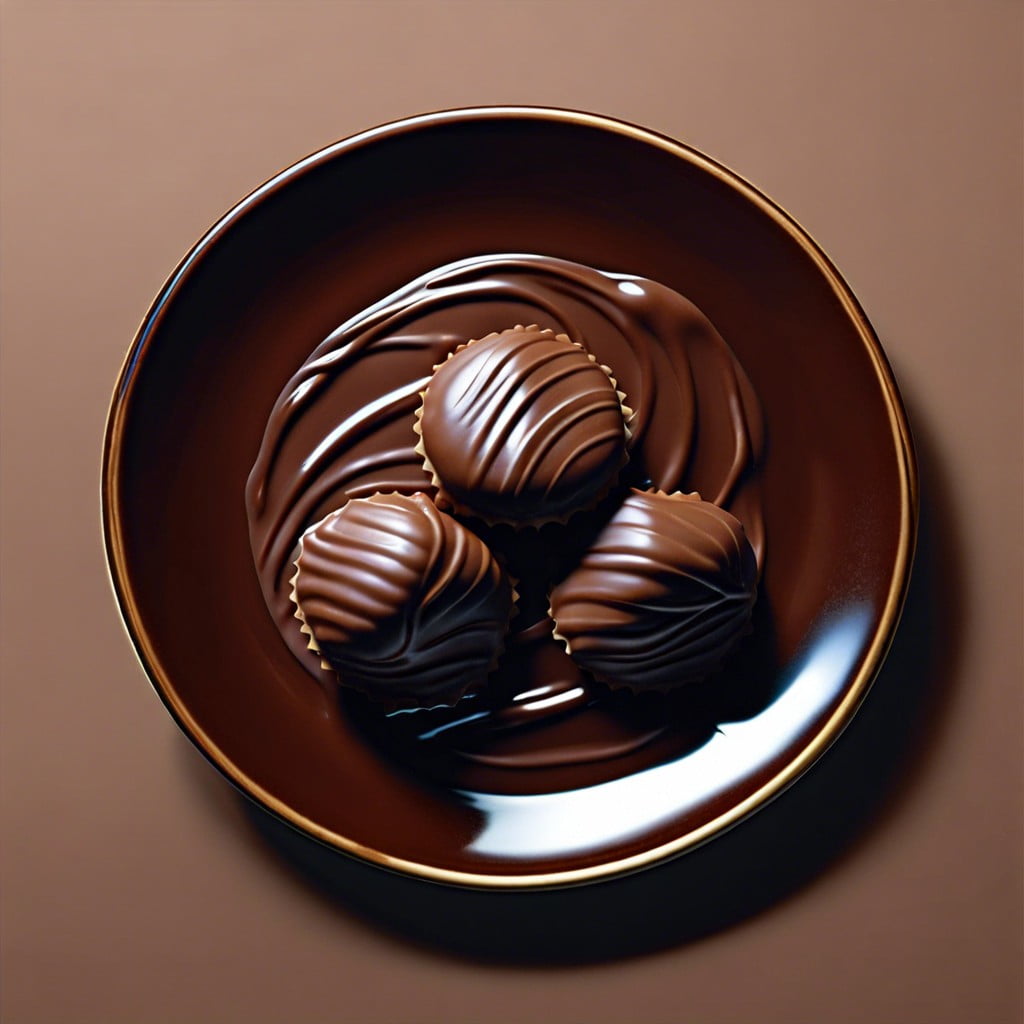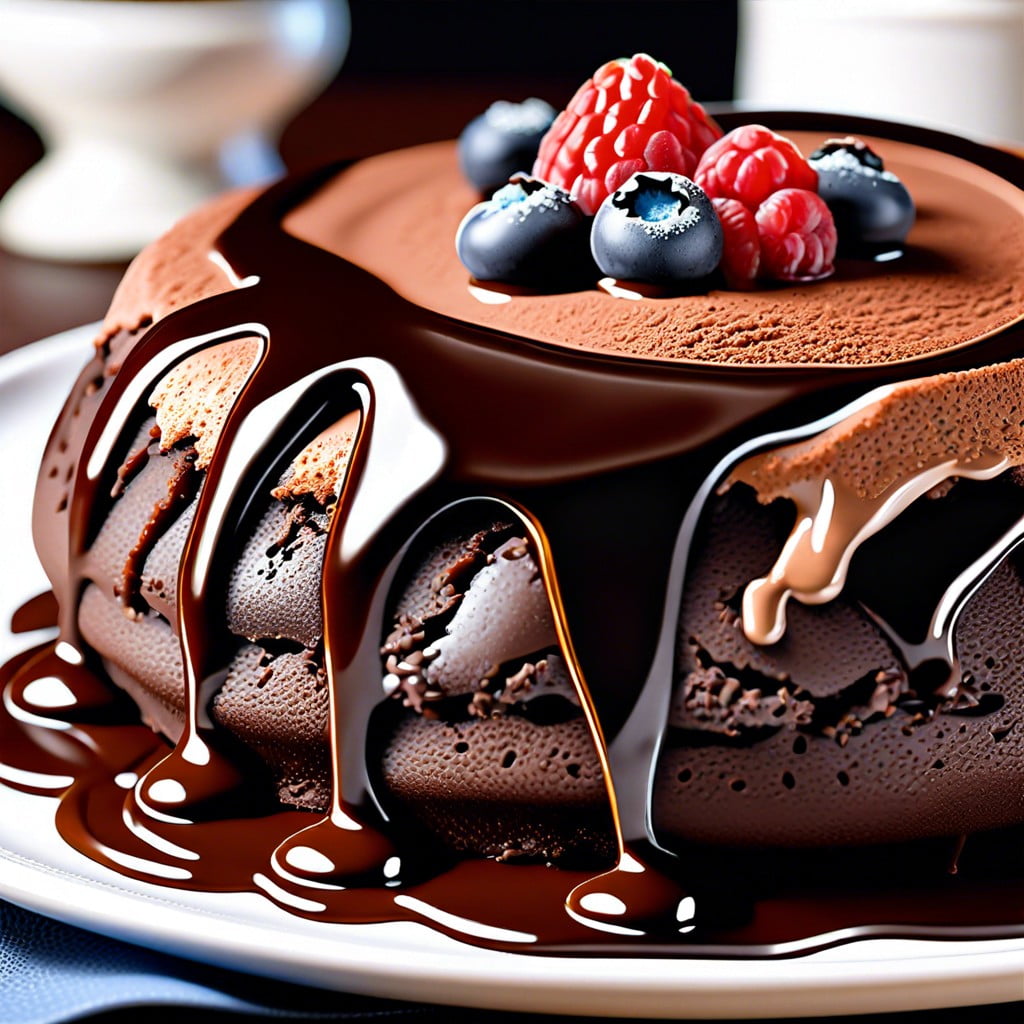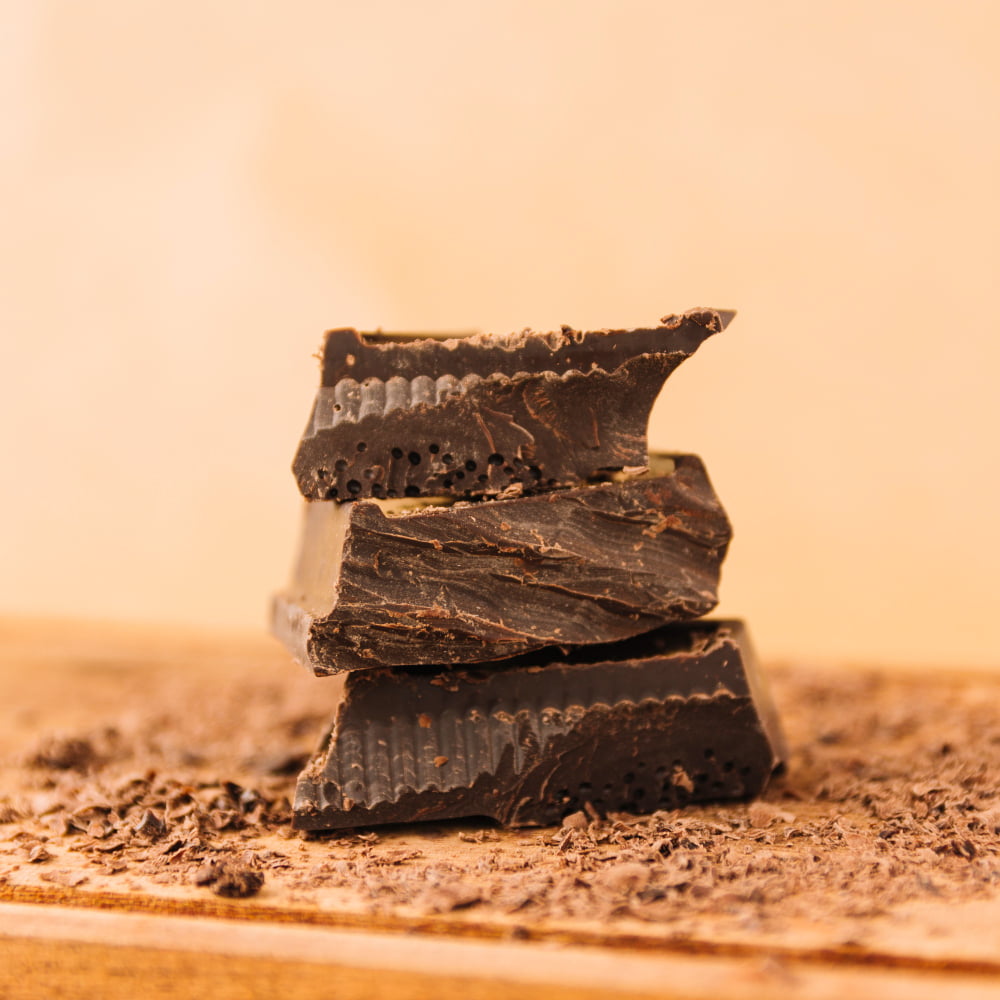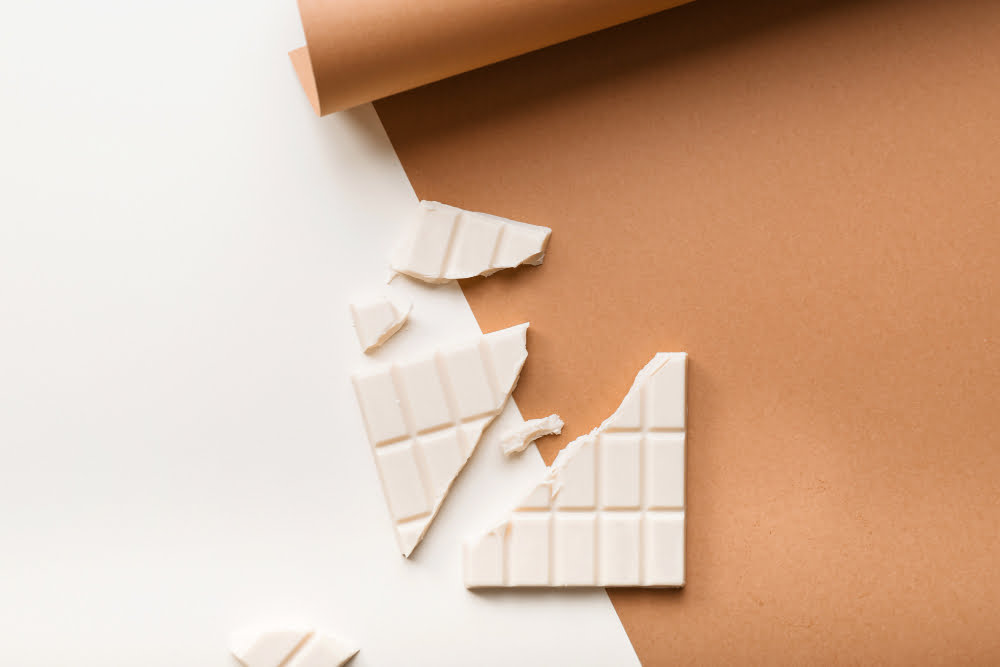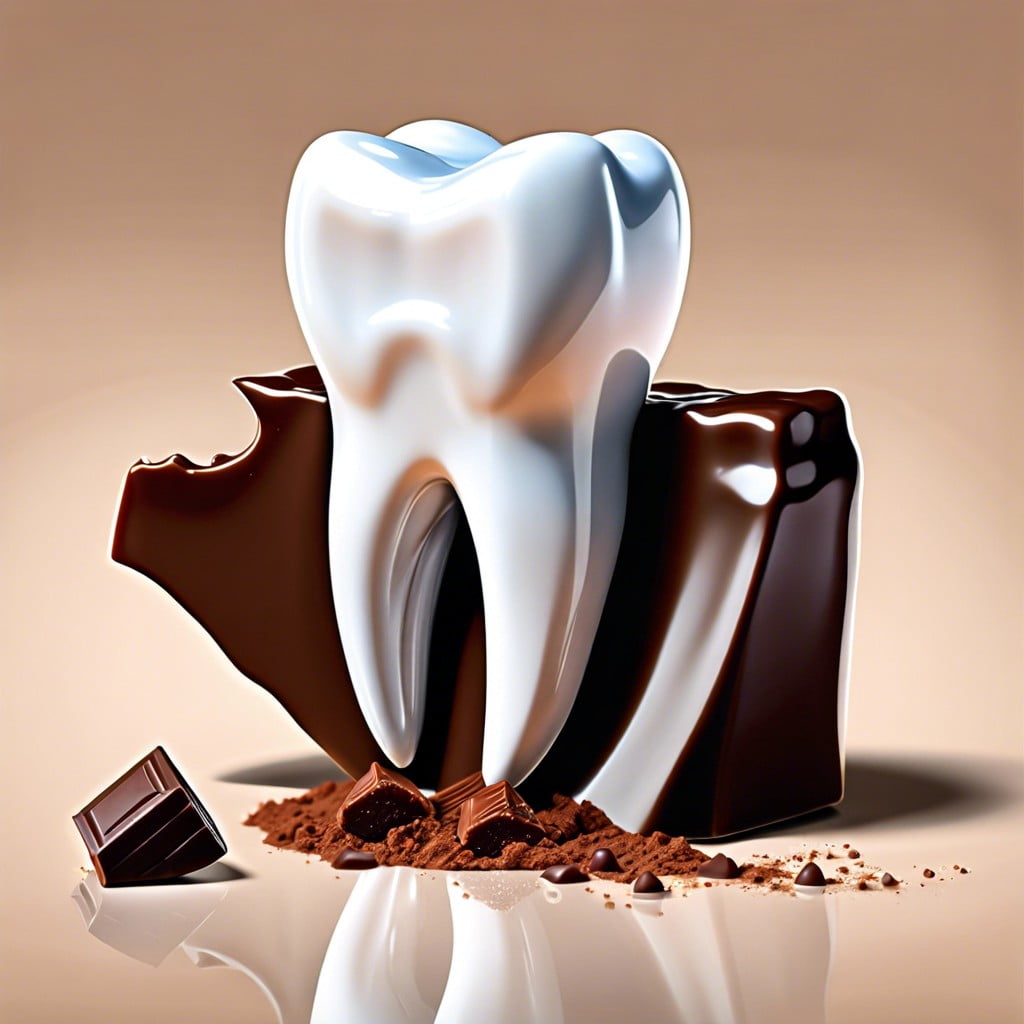This article provides information on how long chocolate typically lasts, letting you effectively manage and maximize your chocolate’s lifespan while preserving its rich taste.
Key takeaways:
- Dark chocolate has the longest shelf life, up to two years.
- Milk chocolate lasts about one year before spoiling.
- White chocolate has a shelf life of four to six months.
- Proper storage away from heat, light, and moisture is crucial.
- Temperature fluctuations and high humidity can shorten chocolate’s lifespan.
Inside
Shelf Life of Different Types of Chocolate

Dark chocolate, thanks to its high cocoa content and low milk content, boasts the longest shelf life of up to two years when stored properly. Its minimal dairy content means it’s less prone to spoilage.
Milk chocolate contains more milk and sugar than its darker counterpart, which reduces its shelf life to about one year. The higher dairy content means it is more susceptible to spoilage.
White chocolate has the shortest shelf life, typically around four to six months. It contains no cocoa solids—only cocoa butter—and a higher percentage of dairy, making it more perishable.
Remember, these time frames assume optimal storage conditions—cool, dry spaces away from direct sunlight and odors—and that the chocolate is still in its original, unopened packaging. Once opened, consume the chocolate in a timely manner to enjoy its best quality.
Dark Chocolate
Dark chocolate boasts a high cocoa content and minimal dairy, lending to its long shelf life compared to other chocolate varieties. Typically, a well-stored bar can remain fresh for around two years. The presence of antioxidants contributes to its longevity.
To ensure optimal preservation, it should be kept in a cool, dry place away from strong odors, as dark chocolate can absorb flavors from its surrounding environment. A consistent storage temperature between 60-68°F (15-20°C) is ideal, preventing the cocoa butter from melting and then re-solidifying, which can lead to bloom – a whitish coating that, while not harmful, can affect the texture and appearance. If the original packaging is unopened, it helps further extend the shelf life by providing a seal against moisture and contaminants.
Even after the ‘best by’ date, if stored properly, dark chocolate’s flavor and quality may be uncompromised. However, taste testing a small amount before use is a good practice to confirm its freshness.
Milk Chocolate
Typically, milk chocolate has a shorter shelf life than dark chocolate due to its higher milk content. Most milk chocolate is best consumed within a year of production. Proper storage can extend its life slightly beyond this timeframe.
To ensure your milk chocolate remains in peak condition, always check the expiration date on the packaging when purchasing. If stored properly in a cool, dry place, away from strong odors and out of direct sunlight, you can maximize its freshness.
Remember, slight color changes or a white film on the surface of milk chocolate may not indicate spoilage but are often signs of temperature fluctuations that cause fat and sugar bloom. These do not make your chocolate unsafe to eat, but they can affect texture and taste.
White Chocolate
White chocolate, with its high content of cocoa butter, milk solids, and sugar, has a more delicate structure, rendering it more prone to spoilage than its dark and milk counterparts. Typically, it keeps well for about four to six months if unopened and stored properly, and about two to three months after opening.
It’s pivotal to shield it from light and to keep it in a cool and dry environment. Unlike dark chocolate, white chocolate’s lack of cocoa solids means it’s more sensitive to heat and moisture, leading to a faster degradation of flavor and texture. Always ensure the packaging is intact to prevent contamination and extend its life.
If you notice any discoloration or an off smell, it’s best to discard the chocolate as these signs suggest the product is past its best.
Factors Affecting Chocolate Shelf Life
Temperature fluctuations can significantly shorten chocolate’s longevity. Prolonged exposure to heat can cause the cocoa butter to melt and rise to the surface, resulting in a grainy texture and altered taste. Conversely, storing chocolate in an environment that’s too cold, such as a refrigerator, may cause condensation which can lead to sugar bloom when brought back to room temperature.
Humidity is another critical factor to consider. High humidity can lead to chocolate absorbing moisture, which not only deteriorates its texture but also promotes the growth of mold, especially if the packaging is compromised. It is advisable to keep chocolate in an environment with low humidity to ensure that it remains dry and free from mold.
Moreover, direct exposure to sunlight or any strong artificial light should be avoided as it can cause discoloration and negatively affect the flavor of the chocolate. A stable environment that shields chocolate from light, heat, and moisture will help maintain its quality and extend its shelf life.
